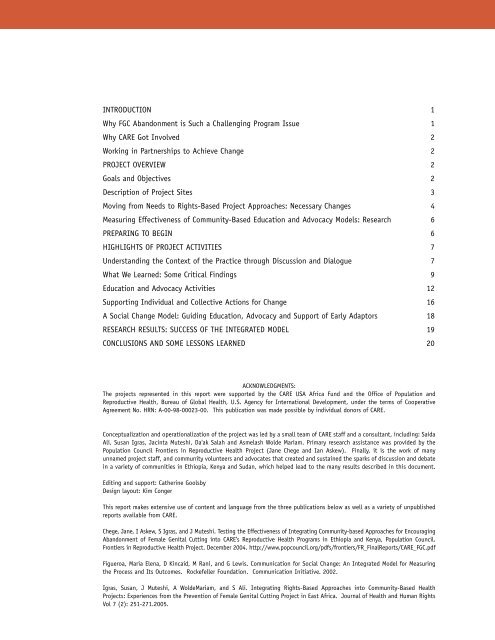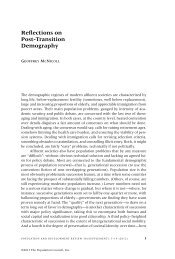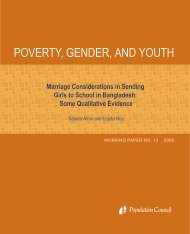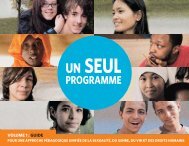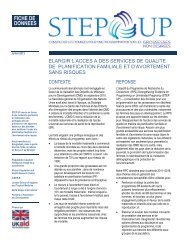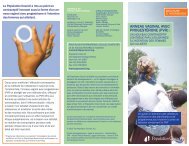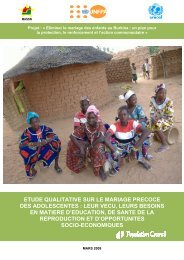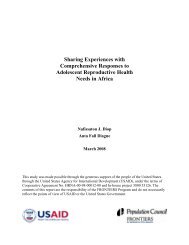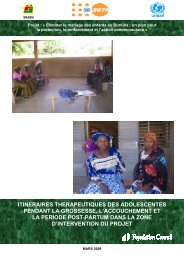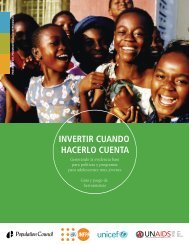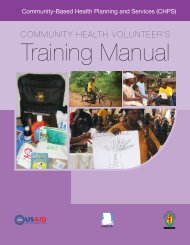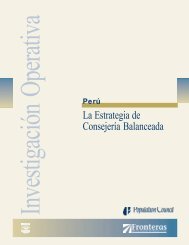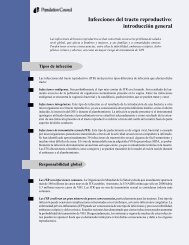CARE's Experiences Working with Communities toward ...
CARE's Experiences Working with Communities toward ...
CARE's Experiences Working with Communities toward ...
You also want an ePaper? Increase the reach of your titles
YUMPU automatically turns print PDFs into web optimized ePapers that Google loves.
INTRODUCTION 1<br />
Why FGC Abandonment is Such a Challenging Program Issue 1<br />
Why CARE Got Involved 2<br />
<strong>Working</strong> in Partnerships to Achieve Change 2<br />
PROJECT OVERVIEW 2<br />
Goals and Objectives 2<br />
Description of Project Sites 3<br />
Moving from Needs to Rights-Based Project Approaches: Necessary Changes 4<br />
Measuring Effectiveness of Community-Based Education and Advocacy Models: Research 6<br />
PREPARING TO BEGIN 6<br />
HIGHLIGHTS OF PROJECT ACTIVITIES 7<br />
Understanding the Context of the Practice through Discussion and Dialogue 7<br />
What We Learned: Some Critical Findings 9<br />
Education and Advocacy Activities 12<br />
Supporting Individual and Collective Actions for Change 16<br />
A Social Change Model: Guiding Education, Advocacy and Support of Early Adaptors 18<br />
RESEARCH RESULTS: SUCCESS OF THE INTEGRATED MODEL 19<br />
CONCLUSIONS AND SOME LESSONS LEARNED 20<br />
ACKNOWLEDGMENTS:<br />
The projects represented in this report were supported by the CARE USA Africa Fund and the Office of Population and<br />
Reproductive Health, Bureau of Global Health, U.S. Agency for International Development, under the terms of Cooperative<br />
Agreement No. HRN: A-00-98-00023-00. This publication was made possible by individual donors of CARE.<br />
Conceptualization and operationalization of the project was led by a small team of CARE staff and a consultant, including: Saida<br />
Ali, Susan Igras, Jacinta Muteshi, Da'ak Salah and Asmelash Wolde Mariam. Primary research assistance was provided by the<br />
Population Council Frontiers in Reproductive Health Project (Jane Chege and Ian Askew). Finally, it is the work of many<br />
unnamed project staff, and community volunteers and advocates that created and sustained the sparks of discussion and debate<br />
in a variety of communities in Ethiopia, Kenya and Sudan, which helped lead to the many results described in this document.<br />
Editing and support: Catherine Goolsby<br />
Design layout: Kim Conger<br />
This report makes extensive use of content and language from the three publications below as well as a variety of unpublished<br />
reports available from CARE.<br />
Chege, Jane, I Askew, S Igras, and J Muteshi. Testing the Effectiveness of Integrating Community-based Approaches for Encouraging<br />
Abandonment of Female Genital Cutting into CARE’s Reproductive Health Programs in Ethiopia and Kenya, Population Council.<br />
Frontiers in Reproductive Health Project. December 2004. http://www.popcouncil.org/pdfs/frontiers/FR_FinalReports/CARE_FGC.pdf<br />
Figueroa, Maria Elena, D Kincaid, M Rani, and G Lewis. Communication for Social Change: An Integrated Model for Measuring<br />
the Process and Its Outcomes. Rockefeller Foundation. Communication Initiative. 2002.<br />
Igras, Susan, J Muteshi, A WoldeMariam, and S Ali. Integrating Rights-Based Approaches into Community-Based Health<br />
Projects: <strong>Experiences</strong> from the Prevention of Female Genital Cutting Project in East Africa. Journal of Health and Human Rights<br />
Vol 7 (2): 251-271.2005.


